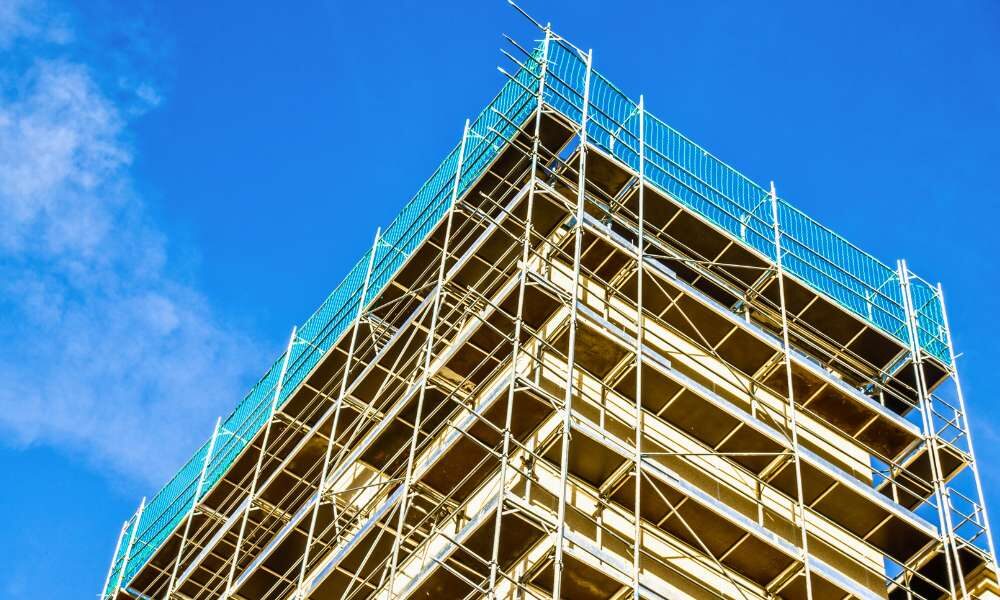The Scaffold inspection provides a secure platform for workers’ maintenance in the construction industry. For trouble-free use, these structures should maintain and inspected regularly. Typically, the inspections should perform by a scaffolding specialist. This comprehensive guide will discuss the safety guidelines to minimize the risk of injuries.
Proper scaffold inspection and maintenance
A scaffold can take a beating throughout its service life. Therefore, inspections should finish before the first use and every seven days. In adverse weather conditions, the inspections should be more frequent. The goal is to ensure the scaffolding is safe for workers and the heavy loads.
Check for faulty components
A scaffold should support the loads it was designed for. Any damage or defects can put workers at risk. As part of the maintenance routine, a specialist will look for missing fasteners, cracks, corroded components, and concrete deposits on the weld. He will also ensure all the pins move freely.
If there is any wear or tear, a specialist will examine the parts that are still usable. He will also recommend the necessary fix to get the scaffold in top-notch condition. Any faults on the inspection report should correct immediately. The damaged parts can replace with serviceable components.
Check for proper assembly
Before you set up the scaffold, you should think of safety. That said, one should follow the manufacturer’s instructions to avoid injuries to workers and the general public.
Here is a simple scaffold inspection checklist
- Are the guide railings in a good place?
- Is the scaffold plumb?
- Are all connections properly aligned?
- Are there any loose parts?
- Proper setup of the foundation components – mud sills, base plates, etc.
Inspecting the ground, the scaffolds are set on
The ground should be firm enough to support the structure. A general guideline is to erect the scaffold on mudsills or baseplates. In addition, the structure should carry the base load it’s designed for, and all components (uprights and braces) must be firmly set.
An inspection professional will also
- Ensure the legs and base posts are aligned
- Check if the scaffold can withstand harsh weather conditions
- Ensure there are no non-compatible parts
- Check for safe access
- Ensure the guardrails are where work finish
During inspections, a scaffolding specialist will ensure workers don’t lean against the guardrails and won’t tip when loading materials.
Inspect the tagging
If a scaffold is not a proper tag, it should not use. The tag must place at eye level to meet the work requirements.
Maintenance
To extend the service life of the scaffold, you should clean all parts before storage. To start with, all materials should store away from heat and moisture. The bolts and moving parts should cover to prevent corrosion. If there’s any mud, paint, or stucco, a sander can help to remove any accumulated debris. A power washer can also remove the dirt after you dismantle the scaffold.
Who should inspect and maintain a scaffold?
These structures should inspect by authorized specialists who can take corrective measures to prevent accidents. The best scaffolding company must have competent professionals with proper knowledge and experience to eliminate hazards around scaffolds. The team can also answer any questions to ensure a safer work environment.
Final Thoughts
The importance of scaffold inspection and maintenance cannot overstate in ensuring the safety of the workers and the overall success of construction projects. Regular inspections conducted by qualified professionals enable the early detection of any deficiencies, wear, and tear, or structural issues, therefore mitigating the risk of accidents. Maintenance practices, including repairs, parts replacement, and adherence to manufacturer guidelines, significantly prolong the service life of scaffolds. Compliance with these strategies not only fosters an environment of safety and productivity but also demonstrates a company’s commitment to its employees’ welfare and the quality of its projects. Hence, scaffold inspection and maintenance remain integral components in the broader landscape of construction safety and efficiency. Read More,




